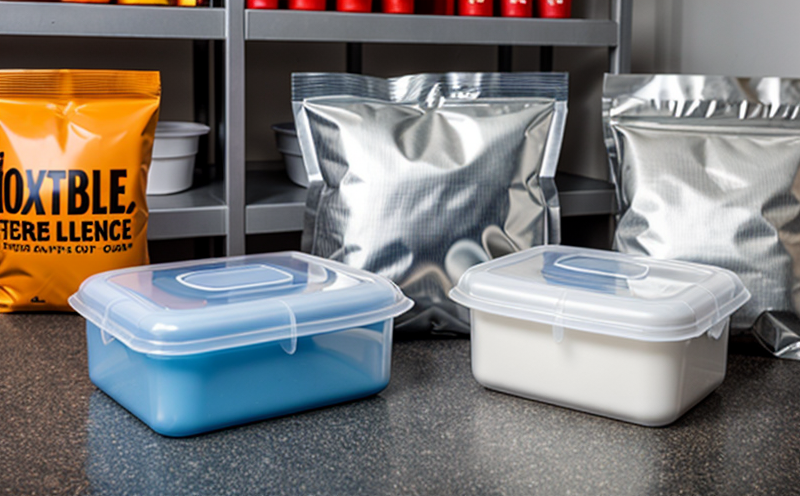ISO 6383-2 Tear Strength of Thin Plastic Films
The ISO 6383-2 standard is crucial in evaluating the tear strength properties of thin plastic films, which are widely used across various industries such as food packaging, pharmaceuticals, and consumer goods. This test assesses how well a film can resist tearing under stress, which is vital for ensuring product integrity and preventing leaks or breaches that could compromise the safety and quality of packaged goods.
Thin plastic films often face significant mechanical stresses during manufacturing processes like printing, lamination, and packaging assembly. These stresses can lead to potential weaknesses in the film’s tear resistance. By conducting ISO 6383-2 tests, manufacturers can identify these vulnerabilities early on, allowing for corrective actions before products reach market.
The test involves subjecting a sample cut into a specific shape (typically a dog-bone or Z-shaped specimen) to controlled tensile forces until it tears. The force required to cause this tear is measured and reported as the tear strength. This metric provides valuable insights into the film’s durability, helping quality managers make informed decisions about material selection and process optimization.
The results of these tests are not only critical for ensuring product safety but also play a key role in meeting regulatory requirements. For instance, food packaging must withstand various environmental conditions without compromising its integrity, making tear strength testing an essential step in the production chain. Similarly, pharmaceutical packaging needs to protect sensitive medications from external contaminants, further emphasizing the importance of robust tear strength.
In addition to quality control and compliance, understanding the tear strength properties of thin plastic films can aid R&D teams in developing innovative materials that meet both performance standards and sustainability goals. By exploring new polymers or additives, companies can enhance their products' tear resistance while reducing environmental impact through lighter, more efficient packaging.
Moreover, the test results can influence procurement strategies by providing data on preferred suppliers who consistently deliver high-quality materials. This information enables organizations to maintain consistent product performance across different production batches and locations, thereby enhancing overall customer satisfaction.
Applied Standards
| Standard | Description |
|---|---|
| ISO 6383-2 | This part of ISO 6383 specifies the method for determining tear strength in thin plastic films. It covers the preparation and testing of specimens, measurement procedures, and reporting requirements. |
Benefits
The ISO 6383-2 tear strength test offers numerous benefits to manufacturers and quality assurance teams. By identifying potential weaknesses in thin plastic films early, companies can prevent costly rejections downstream in the supply chain or at end-users' sites.
Avoiding product recalls due to compromised packaging integrity not only protects brand reputation but also saves significant financial resources typically associated with such incidents. Additionally, consistent adherence to these tests ensures that products meet regulatory standards and industry benchmarks, fostering trust among consumers and regulatory bodies alike.
For R&D departments, this test provides crucial data points for material development efforts aimed at creating more robust packaging solutions. Understanding how different factors like thickness, composition, and surface finish affect tear strength allows scientists to innovate without compromising on safety or sustainability goals.
Customer Impact and Satisfaction
Customers benefit significantly from the rigorously conducted ISO 6383-2 tests. Safe, reliable packaging ensures that the products inside remain protected throughout distribution channels until they reach consumers' hands. This reduces instances of damage during transit or improper handling, enhancing consumer satisfaction.
Furthermore, compliant packaging enhances brand perception, contributing positively to customer loyalty and trust. When customers see that a company invests in thorough testing protocols like ISO 6383-2, they are more likely to perceive the brand as credible and committed to quality.
By ensuring product integrity through robust tear strength testing, organizations contribute to better health outcomes when it comes to food safety or pharmaceutical efficacy. This aligns with broader sustainability initiatives by promoting responsible use of resources without compromising on essential protective measures.





